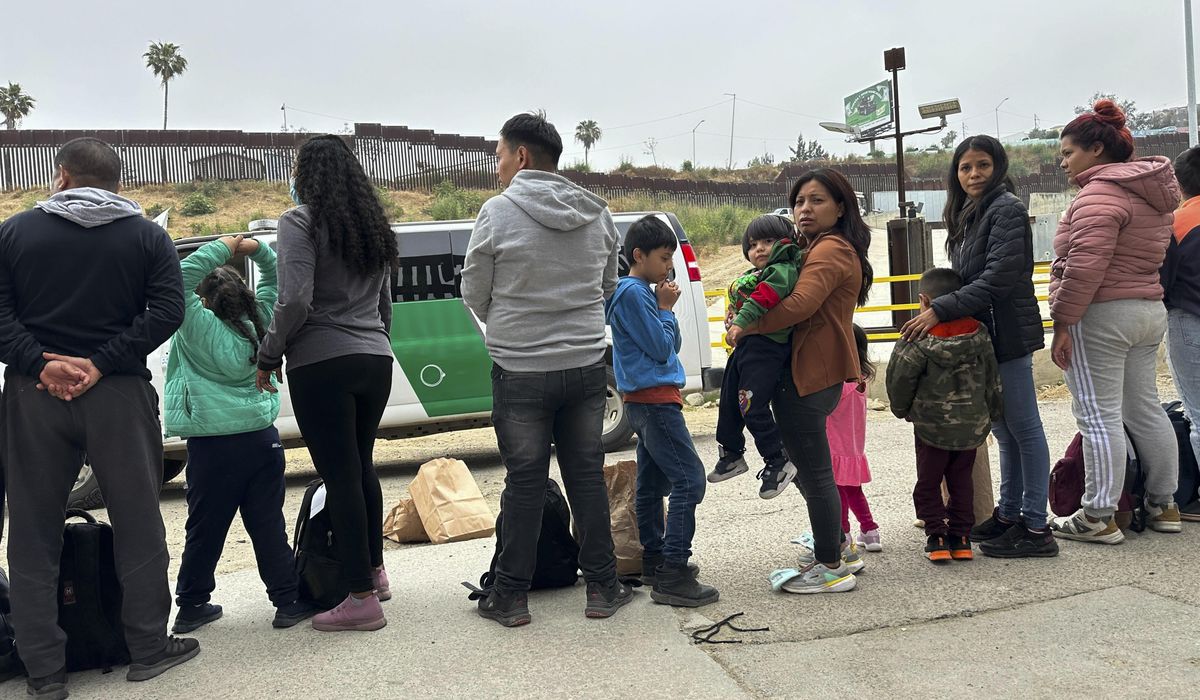


Homeland Security has failed to provide adequate “child-friendly” decorations for its border holding cells for illegal immigrant children, according to an audit by the border agency’s juvenile coordinator.
The decorations are part of Customs and Border Protection’s broader attempt to deliver “trauma-informed” care to children who cross the border illegally, including medical care, plentiful snacks, activities, toys and televisions.
CBP’s juvenile coordinator, in a court-ordered audit, inspected 22 border facilities and found the agency generally does a good job of meeting the children’s needs — but struggled with the decorations.
“At 14 inspections, facilities did not provide child-friendly decoration in accordance with CBP’s Trauma-Informed Care Memorandum,” said Henry A. Moak Jr., the coordinator and CBP’s chief accountability officer, in his report to Judge Dolly M. Gee in July.
He indicated things got better toward the end of his inspection, with some facilities moving to add chalkboards or posters to their holding areas where children are allowed.
CBP, in response to questions from The Washington Times, said it does try to display decorations such as maps of the U.S., posters of popular “internationally recognized” characters or graphics explaining where the children are and what lies ahead for them.
“CBP has undertaken significant steps to ensure children and family units receive the best possible care and spend the minimum amount of time possible in CBP custody,” the agency said.
The agency was unable to say how many of the 14 facilities flagged by the audit have corrected things.
The children come either with families or unaccompanied, and they are among the toughest border cases. Often they have faced unfathomable conditions on the journey and can arrive sick and alone.
Mr. Moak said CBP makes strenuous efforts to care for them, and he generally found the holding facilities tried to accommodate the kids — and work with him on any deficiencies.
When he identified expired juice boxes at some facilities, they were immediately tossed. When he flagged metal bunk beds as a risk, an Arizona facility began researching ways to remove them.
Mark Morgan, a former Border Patrol chief and later CBP commissioner, said discussions about how to care for kids date back years, and they highlight a broader debate about what roles the border agency fulfills.
He said his preference would be to deter illegal immigrants and speedily oust those that do make it across, and in the process deter more people from coming. He said that would reduce the need for the decorations in the first place.
But if the national policy is going to encourage children arriving as illegal immigrants, he said, then the agency has to deal compassionately with those who come.
“Our choice is we wouldn’t receive them, we would remove them, we would prevent them from coming. But if that’s the battlefield we have to operate in, meaning now we’re charged with the care of these families or unaccompanied minors, then I do think we have a responsibility to make sure those standards are as effective and caring and as humane as can be,” he said.
Still, he said it can go too far. He said immigrant rights groups keep pushing for more conciliations for the care of migrants.
“Part of their strategy is to make the demand so overburdensome that we just say uncle and release them,” Mr. Morgan said. “We have a responsibility to provide an acceptable level of care and resources, but there is a line. And when you start referring in my opinion to child ‘decorations,’ I think you’re starting to cross the line.”
Mr. Moak conducts oversight of the treatment of children and submits reports to Judge Gee as part of the Flores settlement, a decades-old court-approved agreement that governs how juvenile migrants are to be cared for.
Jessica Vaughan, policy studies director at the Center for Immigration Studies, said the agreement has perversely fueled the surge of kids showing up at the border in recent years. That, she said, has forced CBP to take on new roles.
“When we have reached the point where the border security agency has to hire hundreds of professionals to provide psychological and medical services to children in its facilities, this is a symptom of a failed border control system, not of a cruel or incompetent immigration agency,” she said. “CBP would not need to worry about needing more therapeutic posters if the White House would start securing the border and stop encouraging illegal migration by children.”
She also pointed to Mr. Moak’s findings that the children, save for some gripes over the food not being to their liking, generally reported feeling safe in CBP’s hands.
• Stephen Dinan can be reached at sdinan@washingtontimes.com.
